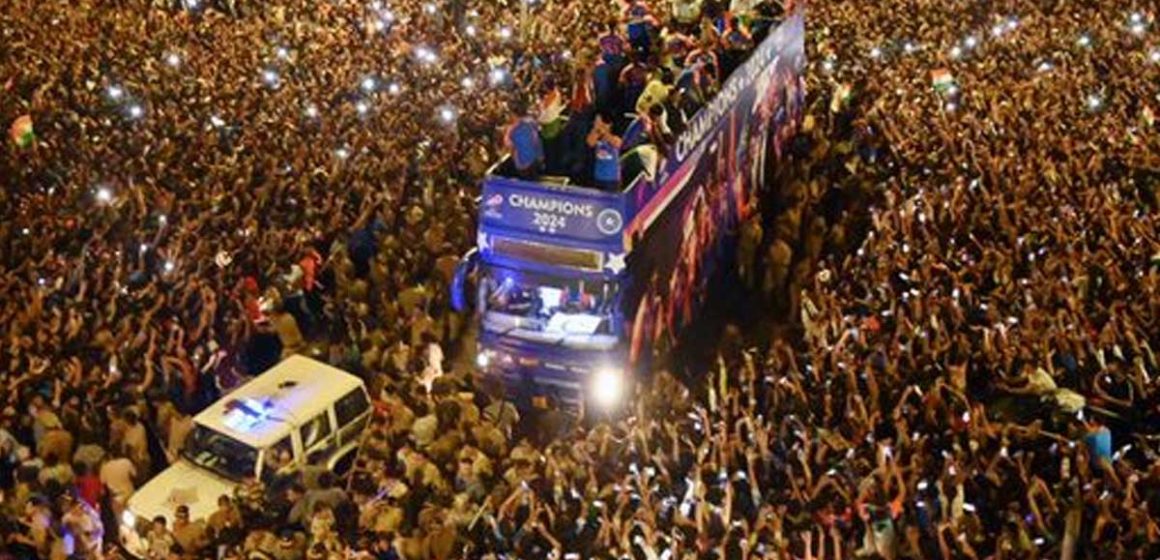Despite having the credit of hosting the world’s largest event, the Kumbh Mela, systems failure can mar celebrations in India writes PRATAP PADODE, President, FIRST Construction Council
Last week two events grabbed headlines for almost opposite reasons:
The Victory Lap celebrations of the Indian Cricket Team in Mumbai and their drive from Mumbai’s Marine Drive to the Wankhede Stadium which paralysed South Mumbai and although the crowds were dangerously close to extreme capacity, no untoward incident marred the celebrations.
The assembly of over 2,50,000 people for a religious event in Hathras which at the conclusion caused a stampede in which 121 people died. The authorities had given permission for a gathering of only 80,000.
Each event must have its estimation of capacity and must adhere to ensuring that once the capacity is exhausted, the inflow is blocked. All preparations and provisions are proportionate to the capacity estimated. Any breach of capacity can have disastrous consequences.
Says a former DGP of UP Police, “Regardless of whether a gathering is private or public, certain protocols have to be adhered to. These standard operating procedures (SOPs) must not be relaxed for any reason or any person. The organiser has to approach the police station concerned for permission and provide a multitude of details. The police allow or reject the application based on their assessment — an assessment based on credible information or “intelligence”. The size and nature of the crowd, its density given the capacity of the location, possible escape routes and a response mechanism in case of an emergency all need to be anticipated.
From my understanding, people from the state and outside started arriving at the venue some three to four days before D-Day. Local intelligence should have been aware of and responded to this. The police’s preparedness in this event seems lacking; the foresight to have a plan that is comprehensive enough to tackle crowds that ultimately ended up being as big as 2.5 lakh people was simply missing,” writes OP Singh, former DGP, UP Police in the Indian Express.
He is right, as we have an example of crowd and event management of gigantic proportions in the form of the Kumbh Mela which takes place once in 12 years and the last one was held in February 2019 which had a gathering of 24.01 crore visitors and yet was incident-free.
On February 4, 2019, the Kumbh Mela in Sangam city witnessed the largest public gathering ever recorded over a 3,200-hectare area. Celebrated in a cycle of approximately 12 years, the 49-day Kumbh Mela 2019, which concluded in March, attracted an unprecedented 24.01 crore visitors. This turnout not only marked the highest footfall in the history of the Kumbh Mela but also surpassed the annual tourist footfall in Uttar Pradesh between 2014 and 2017. Among the visitors were 10.30 lakh foreign tourists, highlighting the global appeal of the event.
Safety and Security Measures
To ensure a safe and seamless execution of this mega event, extensive preparations were made, focusing on advanced monitoring and crowd management. A modern integrated command-and-control centre was established for 24-hour surveillance, utilizing 1,200 CCTV cameras. Real-time video analytics were employed for effective crowd management, including algorithms for real-time detection and alerts in cases of overcrowding, uni- or bi-directional movement, and wrong-way movements. The Trinetra app was used for surveillance to detect terrorists, criminals, and suspicious elements.
Zonal and Sectoral Division
The entire region was divided into nine zones and 20 sectors, with the deployment of over 20,000 police personnel, 6,000 home guards, 40 police stations, 58 outposts, 40 fire stations, 80 companies of central forces, and 20 companies of Provincial Armed Constabulary (PAC). Anti-Terrorist Squad (ATS) commandos, anti-sabotage commandos with snipers, bomb disposal units, sniffer dog squads, and intelligence units were also deployed to counter any terrorist activities.
Fire Safety and Emergency Response
Fire safety was a critical component of the preparations. Forty fire stations were established in and around the venue, complemented by over 4,000 fire hydrants, 70 high-pressure water mist motorcycles, and trolley-mounted high-pressure extinguishers. Fire-fighting speedboats and the Bambi Bucket system for aerial firefighting from helicopters were also on standby. The National Disaster Response Force (NDRF) and State Disaster Response Force (SDRF) teams were present to handle any emergencies.
Technology and Surveillance
In addition to the extensive physical security measures, technological advancements played a crucial role in ensuring the safety of attendees. Drone monitoring, watchtowers, baggage scanners, and a modern communication system were deployed to enhance surveillance and coordination among the security forces.
The comprehensive planning and execution of the Kumbh Mela 2019 demonstrate the meticulous preparation required to manage such a large-scale event successfully. These measures ensured that the event was conducted safely and smoothly, setting a benchmark for future mega-events in India.

Image credit: ANI


